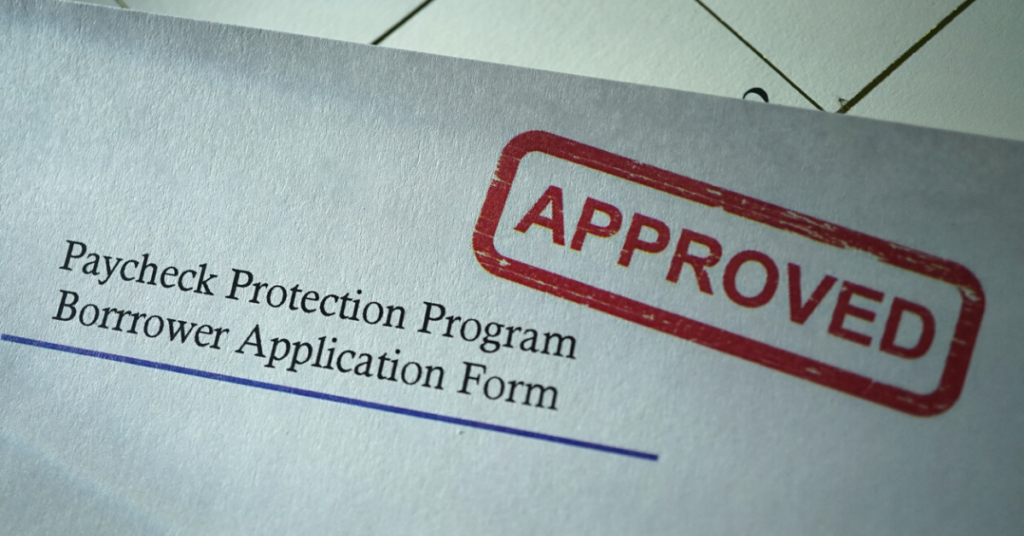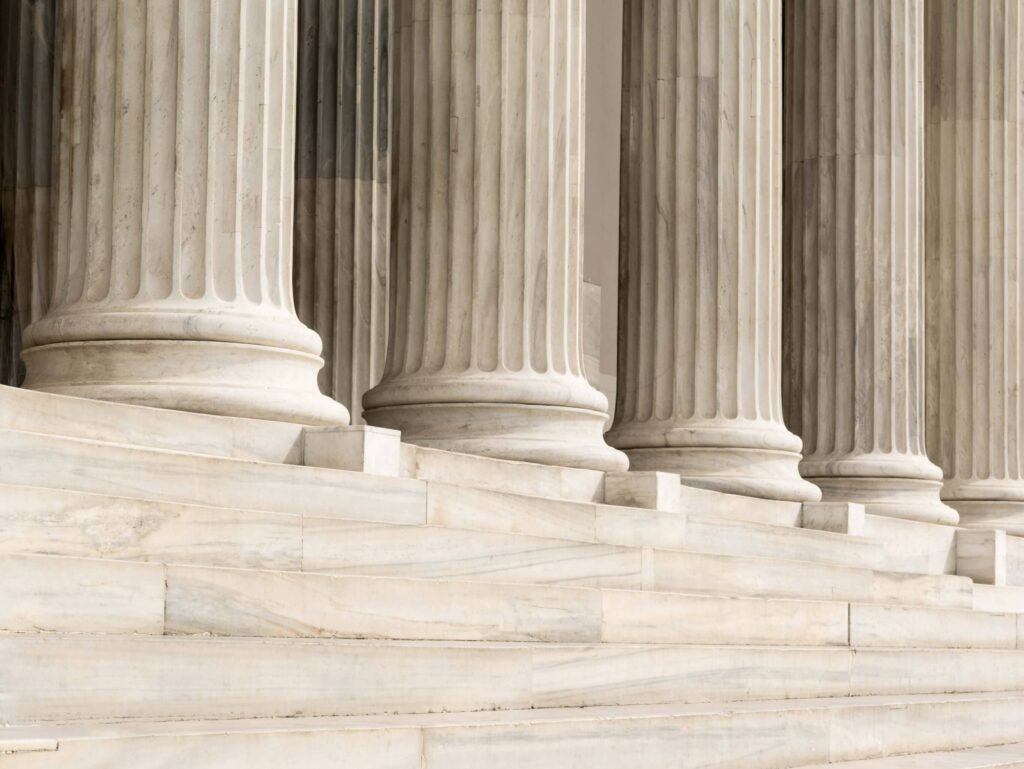
SBA, Treasury Issue PPP Loan Forgiveness Application
On the evening of May 15, 2020, the Small Business Administration (“SBA”) and U.S. Treasury Department (“Treasury”) released their highly-anticipated Paycheck Protection Program (“PPP”) loan forgiveness application and instructions. The accompanying press release noted that additional regulations and guidance would be issued soon to assist borrowers with completing their applications for forgiveness and lenders with compliance.
The press release also noted that the loan forgiveness application and instructions include several features intended to reduce compliance burdens and simplify the overall PPP loan forgiveness process for borrowers, including:
- Options for borrowers to calculate payroll costs using an “alternative payroll covered period” conforming to their regular payroll cycles;
- Flexibility to include eligible payroll and non-payroll expenses paid or incurred during the eight-week period following receipt of PPP loan proceeds;
- Step-by-step instructions on how to perform the calculations required by the CARES Act to confirm eligibility for loan forgiveness;
- Borrower-friendly implementation of statutory exemptions from loan forgiveness reduction based on rehiring by June 30, 2020; and
- Addition of a new exemption from the loan forgiveness reduction for borrowers who have made a good-faith, written offer to rehire workers that were declined.
The form and instructions also make the following important clarifications:
- The amount of a borrower’s PPP loan forgiveness will not be reduced for any employee headcount reductions related to:
- Individuals to whom the borrower made a good-faith written offer to rehire as an employee that was declined (as previously provided in the SBA’s “FAQ 40” guidance);
- Employees who were terminated for cause; or
- Employees who voluntarily resigned.
- Amounts paid on leases of real and personal property qualify as “rent,” and are accordingly eligible for PPP loan forgiveness; and
- A borrower’s “mortgage interest payments” include interest on loans for real and personal property, therefore, interest paid on loans for equipment, vehicles, and other personal property is eligible for PPP loan forgiveness.
The form provides that borrowers must complete the application as directed and submit it to their lender or the lender servicing the loan. Borrowers are also given the option to submit the application electronically through their lender.
The application is divided into four sections: (1) the PPP loan forgiveness calculation form; (2) Schedule A, where borrowers calculate payroll costs and any full-time equivalency (“FTE”) reduction; (3) a worksheet for Schedule A; and (4) an optional borrower demographic information form. Borrowers must submit items (1) and (2) to their lenders.
The key metric for PPP loan forgiveness is, of course, the amount of the borrower’s payroll costs and other eligible expenses attributable to the “Forgiveness Covered Period” (“FCP”). As discussed in our last PPP alert, the FCP is the eight-week period beginning on the date that PPP loan proceeds were received in the borrower’s bank account. Commentators had advocated for a kind of “cash method” where the FCP would start either at the beginning of the payroll period during which funding was received or the beginning of the next payroll period, at the borrower’s discretion.
While the SBA declined to adopt this method in its “FAQ” guidance, the PPP loan forgiveness application and instructions provide some latitude for payments made after the FCP. Specifically, payroll costs are considered “incurred” on the date the employee earns the compensation and considered “paid” on the date the borrower either gives the payroll check to an employee or initiates an ACH transaction for a direct deposit.
If a borrower uses a bi-weekly or more frequent payroll schedule, then in calculating its payroll costs, it can use either the FCP or an “Alternative Payroll Covered Period” beginning on the first day of the scheduled payroll period following the day on which the borrower received the PPP loan proceeds. Regardless, payroll costs earned by an employee will be considered as “paid” during the period and will count towards forgiveness as long as the payment is made on or before the next regularly scheduled payroll date, even if that date falls outside the FCP or Alternative Payroll Covered Period. No guidance is provided for employers who use multiple payroll schedules for different classes of employees.
Consistent with the mandates of the CARES Act, the forgiveness application and instructions retain the requirement that 75 percent of PPP borrowing be used for payroll costs, and no more than 25 percent be used for eligible non-payroll costs. It must be emphasized, however, that the calculation is based on the amount of forgiveness and not the total amount of loan proceeds. Put another way, the borrower must use 75 percent of the forgiveness amount for payroll costs or face losing part of the forgiveness.
The instructions include a list of documents borrowers must submit with their forgiveness applications to support payroll cost, FTE, and non-payroll eligible cost calculations and documents that borrowers must maintain for six years after forgiveness or repayment in full, but which are not required to be submitted unless requested by the SBA. The documents that must be submitted include:
Payroll Cost
- Bank account statements or third-party payroll service provider reports documenting the amount of cash compensation paid to employees;
- Tax forms (or equivalent third-party payroll service provider reports) for the periods that overlap with the FCP or the Alternative Payroll Covered Period:
- Payroll tax filings reported, or that will be reported, to the IRS (typically, Form 941); and
- State quarterly business and individual employee wage reporting and unemployment insurance tax filings reported, or that will be reported, to the relevant state.
- Payment receipts, canceled checks, or account statements documenting the amount of any employer contributions to employee health insurance and retirement plans that the borrower included in the forgiveness amount.
FTE
- Documentation showing (at the election of the borrower):
- The average number of FTE employees on payroll per month employed by the borrower between February 15, 2019, and June 30, 2019;
- The average number of FTE employees on payroll per month employed by the borrower between January 1, 2020, and February 29, 2020; or
- In the case of a seasonal employer, the average number of FTE employees on payroll per month employed by the borrower between February 15, 2019, and June 30, 2019; between January 1, 2020, and February 29, 2020; or any consecutive twelve-week period between May 1, 2019, and September 15, 2019. Documents may include payroll tax filings reported, or that will be reported, to the IRS (typically, Form 941) and state quarterly business and individual employee wage reporting and unemployment insurance tax filings reported, or that will be reported, to the relevant state. Documents submitted may cover periods longer than the specified time period.
Non-Payroll Eligible Cost
- Documentation verifying existence of the obligations/services prior to February 15, 2020, and eligible payments from the FCP.
- Business mortgage interest payments: Copy of lender amortization schedule and receipts or canceled checks verifying eligible payments from the FCP; or lender account statements from February 2020 and the months of the FCP through one month after the end of the FCP verifying interest amounts and eligible payments.
- Business rent or lease payments: Copy of current lease agreement and receipts or canceled checks verifying eligible payments from the FCP; or lessor account statements from February 2020 and from the FCP through one month after the end of the FCP verifying eligible payments.
- Business utility payments: Copy of invoices from February 2020 and those paid during the FCP and receipts, canceled checks, or account statements verifying those eligible payments.
Documents that borrowers must maintain for six years after forgiveness, but which are not required to be submitted unless requested by the SBA include:
- PPP Schedule A Worksheet or its equivalent and the following:
- Documentation supporting the listing of each individual employee in PPP Schedule A Worksheet Table 1, including the “Salary/Hourly Wage Reduction” calculation, if necessary.
- Documentation supporting the listing of each individual employee in PPP Schedule A Worksheet Table 2; specifically, that each listed employee received during any single pay period in 2019 compensation at an annualized rate of more than $100,000.
- Documentation regarding any employee job offers and refusals, firings for cause, voluntary resignations, and written requests by any employee for reductions in work schedule.
- Documentation supporting the PPP Schedule A Worksheet “FTE Reduction Safe Harbor.”
- All records relating to the borrower’s PPP loan, including documentation submitted with its PPP loan application, documentation supporting the borrower’s certifications as to the necessity of the loan request and its eligibility for a PPP loan, documentation necessary to support the borrower’s loan forgiveness application, and documentation demonstrating the borrower’s material compliance with PPP requirements.
The complete PPP loan forgiveness application and instructions can be found here:
Members of Smith Debnam are closely monitoring developments related to the PPP and other programs designed to keep the economy moving as part of our comprehensive response to the COVID-19 pandemic. If you have any questions, please contact us.
